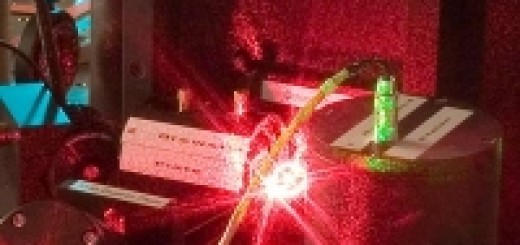Nuclear magnetism, electron order, spin-filtering, and spin-selective Peierls transitions in interacting one-dimensional conductors
 Wednesday, 2 June 2010. 12:00-13.00
Wednesday, 2 June 2010. 12:00-13.00
Prof. Bernd Braunecker
ICMM, CSIC
ABSTRACT:
The interaction between localized magnetic moments and the electrons of a one-dimensional conductor can lead to an ordered phase in which the magnetic moments and the electrons are tightly bound to each other. We show that this occurs when a lattice of nuclear spins is embedded in a Luttinger liquid [1,2]. Experimentally available examples of such a system are single wall carbon nanotubes grown entirely from 13C and GaAs-based quantum wires. In these systems the hyperfine interaction between the nuclear spin and the conduction electron spin is very weak; yet it triggers a strong feedback reaction that results in an ordered phase consisting of a nuclear helimagnet that is inseparably bound to an electronic density wave combining charge and spin degrees of freedom.
The ordering of the electrons can be viewed as a spin-selective Peierls-like transition, which is initiated by the helical nuclear field. It affects only one half of the conducting modes, for which it opens a gap that is strongly enhanced by electron interactions. The other half remains in a strongly modified gapless state that conducts opposite spins in opposite directions, thus providing a perfect spin
filter. Electron interactions also raise the transition temperature of the combined nuclear spin-electron phase. For carbon nanotubes the latter is enhanced by 4 orders of magnitude into the millikelvin range, and the spin-filtering electron gap grows by an order of magnitude into the Kelvin range.
If nuclear spins are absent, Rashba spin-orbit interactions can cause an identical Peierls-like transition, triggered now by either a uniform external magnetic field or even by intrinsic spin-orbit interactions [3]. The former case occurs in semiconductor quantum wires, and interactions lead to an enhancement of the spin-filtering gap by an order of magnitude up to 10-30 K for a magnetic field of ~ 1 T. The latter case occurs in carbon nanotubes. The intrinsic gap is similarly renormalized to again 10-30 K, and so provides a stable spin filter even in the absence of a time-reversal symmetry breaking field.
References
[1] B. Braunecker, P. Simon, and D. Loss, Phys. Rev. Lett. 102, 116403 (2009).
[2] B. Braunecker, P. Simon, and D. Loss, Phys. Rev. B 80, 165119 (2009).
[3] B. Braunecker, G. I. Japaridze, J. Klinovaja, and D. Loss, arXiv:1004.0467.


















